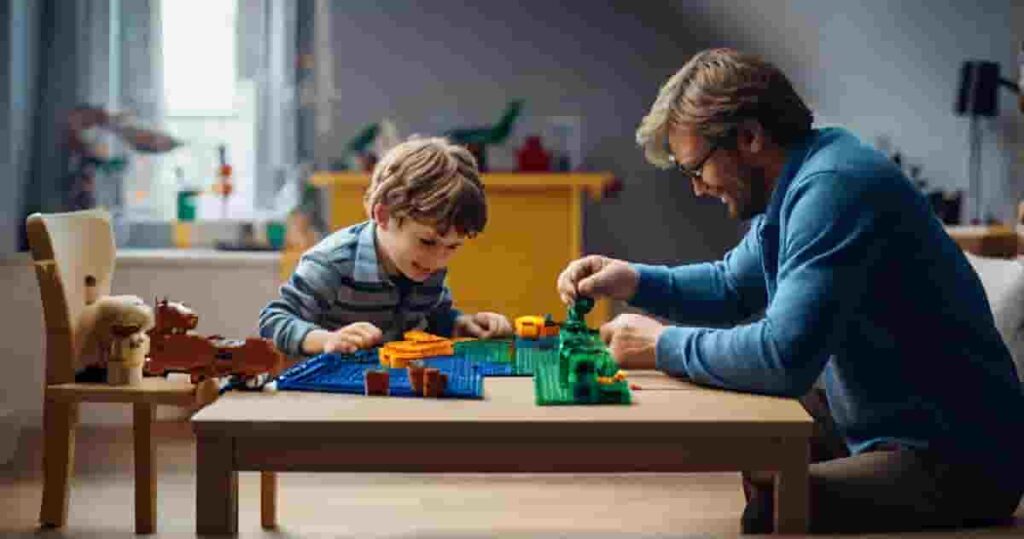Children nowadays spend more time than ever in front of screens. Whether it’s a cellphone, tablet, TV, or laptop, the dominance of technology in our lives is undeniable. This pattern has important implications for the health of our youngsters. Comprehending the significance of controlling screen time is critical. Abundant screen use has been associated with different health problems. It could impact a child’s overall welfare. It’s not only about restricting their screen time randomly. It’s about guaranteeing a healthy balance that sustains their physical and mental growth. In this piece, we’ll investigate practical advice on how to manage kids screen time, advocating a healthier and more stable way of life.
What is the Impact of Too Much Screen Time?
Spending too much time on screens can affect our kids in different ways. Let’s break it down:
Health Concerns
Physical Health Issues
When children spend excessive hours gazing at screens, it may result in weary eyes, poor posture, and insufficient physical activity. It’s not solely about the content on the screen. The amount of time spent on screen also affects their bodies.
Mental Health Implications
Too much screen time might affect their sleep or stress them out. It’s essential to consider how screens influence their feelings and overall mental well-being.
Academic and Social Challenges
Effects on Academic Performance
Studies suggest excessive screen time can impact how well young kids do in school. It’s not about blaming screens entirely but finding a balance to help them focus on their studies.
Impact on Social Skills
Kids must interact with others to develop social skills. If screens take up too much of their time, it might impact their ability to communicate and bond with friends and family. Balancing screen time is crucial for healthy social development.
How To Manage Kids Screen Time – Practical Tips for Parents

Managing your children’s screen time is essential for their well-being in today’s digital age. There are some straightforward strategies that every parent can implement.
Setting Screen Time Limits
Age-Appropriate Guidelines
Consider your child’s age when setting screen time limits. For example, the American Academy of Pediatrics recommends no more than one hour of screen time per week for children aged 2 to 5. As they grow older, you can gradually increase the limit. Follow the guidelines to match their developmental stage.
Strategies for Managing Screen Time for Toddlers
For toddlers, limit screen time to interactive and educational content. Use age-appropriate apps that encourage learning through play. Ensure screen time is balanced with other activities like reading and outdoor play.
Guidelines for School-Age Children
Establish clear guidelines for school-age children. For example, limit daily screen time and encourage a mix of educational and recreational activities. Set expectations for responsible online behavior and monitor the content they access.
Dealing with Screen Time Challenges for Teenagers
Teenagers often have more autonomy. Instead of strict limits, focus on open communication. Discuss responsible online behavior, the importance of sleep, and the potential impact of excessive screen time on their well-being. Find a balance that allows for independence while maintaining healthy habits.
Balancing Educational and Recreational Screen Time
Not all screen time is equal. While educational content can be beneficial, so keep a balance. For instance, if your child spends 30 minutes on an educational app, balance it with 30 minutes of recreational screen time, like watching a cartoon or playing a game. This ensures a mix that supports both learning and leisure.
Using Parental Controls and Tools
Take advantage of parental device controls. These tools allow you to set reasonable limits and restrict access to inappropriate content. For example, on many tablets, you can find settings that let you control the hours your child can use the device, ensuring a healthy balance.
Encouraging Alternative Downtime Activities
Outdoor Play and Physical Activities
Encourage your young children to engage in outdoor and physical activities. This could mean a trip to the local park, riding bikes, or playing a game of tag. Not only does it provide a break from screens, but it also promotes physical health and social interaction.
Reading and Educational Pursuits
Promote reading and educational activities. Instead of screen time before bed, consider introducing a bedtime story routine. Explore topics of interest together, fostering a love for learning without relying on screens.
Hobbies and Creative Endeavors
Help your child discover hobbies and creative outlets. Whether drawing, playing a musical instrument, or building with LEGO bricks, these activities offer a fulfilling alternative to screen time. For instance, if your child is interested in painting, give them paints and canvases to nurture their creativity.
Creating a Balanced Media Approach for Your Family
Crafting a family media plan is essential in the digital age to ensure a healthy relationship with screens. Let’s explore practical steps to create a plan that works for everyone.
Creating a Family Media Plan
Involving the Whole Family in Discussions
Start by openly conversing with your family. Discuss everyone’s views on screen time and devise a plan together. For example, ask each family member how much screen time they think is reasonable, ensuring everyone’s opinions are considered.
Establishing Consistent Rules and Expectations
Once you’ve gathered everyone’s input, establish clear and consistent rules. For instance, decide on screen-free times, like during meals or before bedtime. Having predictable expectations helps create a routine that everyone can follow.
Monitoring and Adjusting the Plan as Needed
A family media plan isn’t set in stone. Regularly review how well it’s working and adjust as needed. If you notice that specific rules are causing stress or aren’t practical, be flexible and find alternatives that better suit your family’s dynamics.
Being a Positive Role Model
Demonstrating Healthy Screen Habits
Children learn by example. Show them healthy screen habits by managing your own screen time responsibly. If they see you using screens mindfully, they’re more likely to adopt similar habits.
Engaging in Shared Activities
Instead of each family member being glued to their screens, engage in shared activities. For instance, have a family game night, go for a hike, or cook a meal together. These shared experiences not only reduce screen time but also strengthen family bonds.
Encouraging Open Communication about Technology Use
Create an environment where everyone feels comfortable discussing technology use. Encourage open communication about the apps they’re using or the content they’re watching. This fosters trust and allows you to address any concerns or challenges together.
Resources and Tools for Parents
In the sea of digital options, finding straightforward resources and tools can make managing your child’s screen time more manageable. Let’s explore some practical solutions and wrap up with a reminder of what matters most.
Educational Apps and Content on the Internet
Explore educational apps that align with your child’s age and interests. For example, apps like ABCmouse or Khan Academy Kids offer engaging content that supports learning in a fun way. These tools can be a valuable addition to your child’s screen time.
Parental Control Apps and Software
Use parental control apps and software available for various devices. Examples include Qustodio, Norton Family, and Apple Screen Time. These tools allow you to set limits, track usage, and ensure your child’s online activities are safe and appropriate.
Online Resources for Guidance and Support
Tap into online resources that guide and support parents navigating the digital landscape. Websites like Common Sense Media offer reviews on apps, movies, and games, helping you make informed decisions about what content suits your child.
Final Words
Managing your child’s screen time doesn’t have to be overwhelming. You can create a healthy balance by setting clear limits, engaging in alternative activities, and fostering open communication. Consider how to manage kids screen time guidelines, use available tools wisely, and proactively seek guidance. The key is balance. Screens are part of our daily lives, and when used mindfully, they can be valuable tools for learning and entertainment. Establishing a family media plan, being positive role models, and exploring the right resources lays the foundation for a balanced and healthy approach to screen time.



